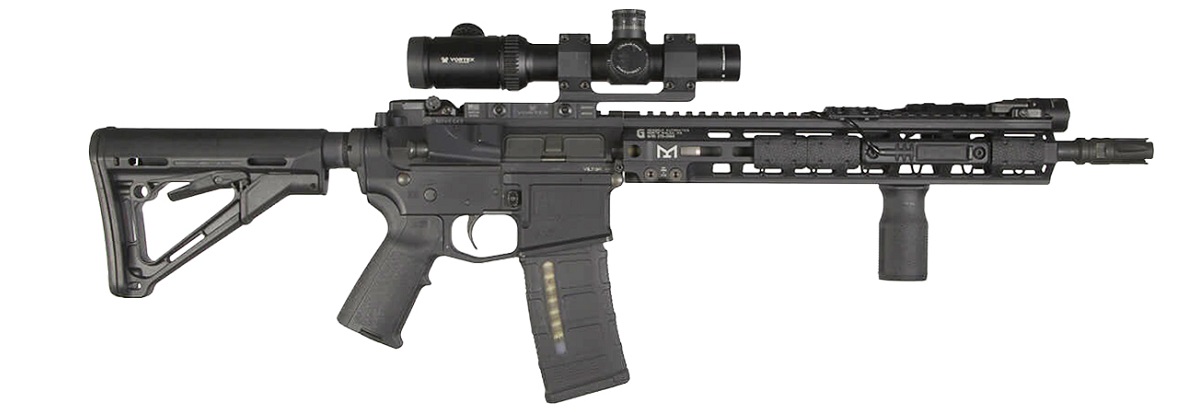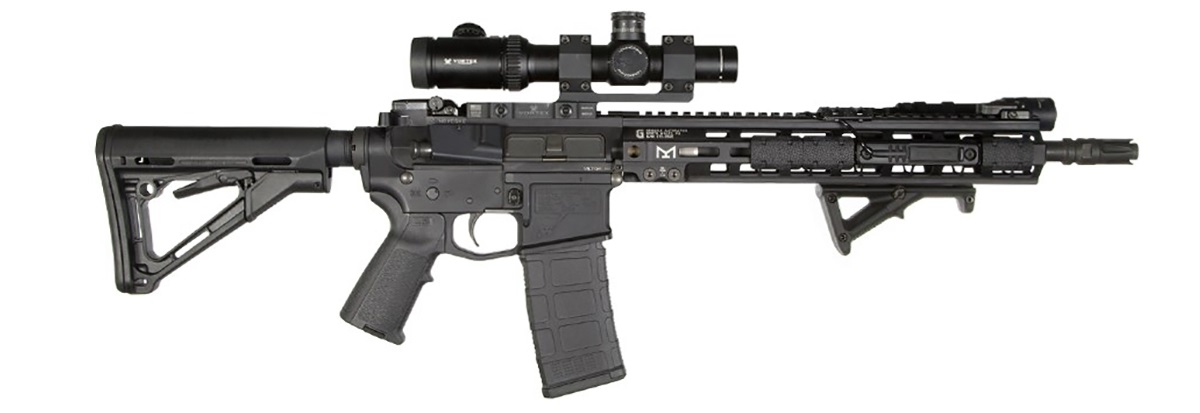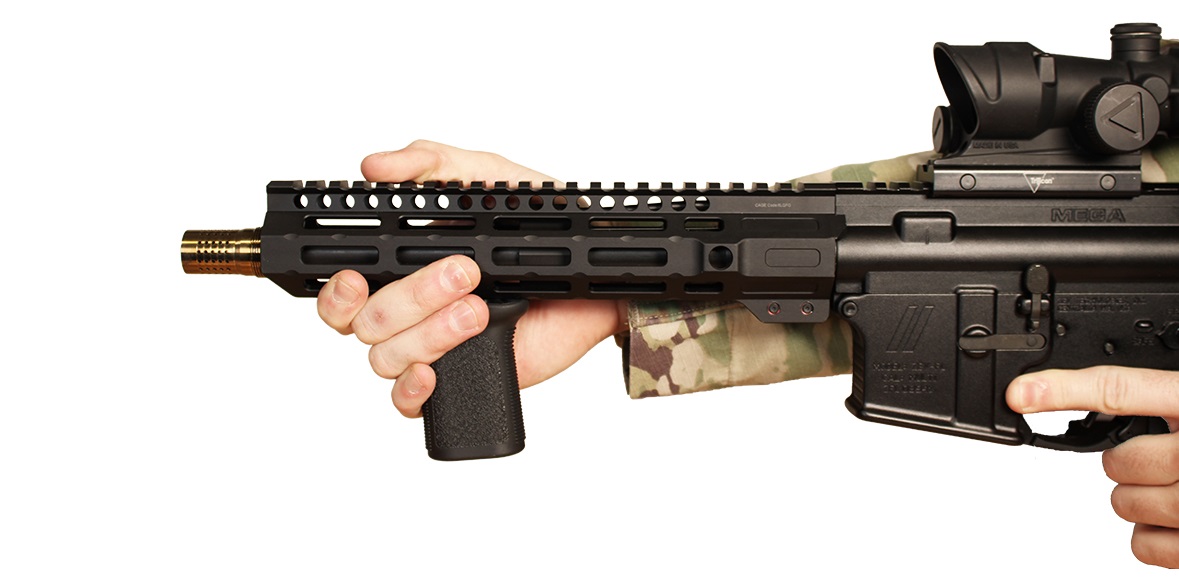The Right (and Wrong) Way to Install an AR-15 Foregrip
Posted by 80-Lower.com on Nov 27th 2024
Your AR-15's probably more accurate than you. But you can mitigate your skill issue and increase your accuracy by installing an utterly simple and proven device: The forward grip. A quality foregrip improves accuracy through better control of the muzzle, which also provides good recoil mitigation. But there's a common problem facing the venerable foregrip. A lot of AR-15 owners install their foregrips wrong. Here's the right way to do it.
First, Pick Your Grip Angle
Forward grips come in lots of angles. Some are straight -- often called "broomstick" handles -- while others are curved. Some just feature a plain angle that allows the grip to install slanted, relative to the forward angle of the handguard.
Which Grip Angle is Right For You?
The vertical vs. forward grip angle argument is, like all other arguments about AR-15 "stuff", largely overblown with technical gobbledygook, and ultimately up to your personal preference.
Arguments for The Vertical Grip

Pictured: Magpul MVG Vertical Grip (M-LOK)
The vertical grip crowd generally likes to cite things like comfort and reactivity (the ability to quickly get on target) as their reasons for picking a broomstick. It's also this writer's opinion that the vertical grip does generally complement the natural position of the wrist and supporting hand when the forward arm is resting halfway between supination and pronation.
Arguments for The Angled Grip

Pictured: Magpul Angled Foregrip (M-LOK)
The angled grip crowd picks this grip because it tends to provide a more "locked in" feel, with tight control of the barrel and handguard, which favors more consistent shot placement with less muzzle rise. Having extensively tested both grips, this writer also agrees with these arguments -- the angled grip does, indeed, provide more control of the muzzle.
What About Hand Stops?
Hand stops are the hipster's version of an angled grip. They provide an opposing surface for the ulnar side of the palm (that's the part of the hand you would perform a "karate chop" with) to push back against, providing a similar effect to that of an angled grip.
The hand stop provides good leverage and control of the barrel, while offering a more compact profile than any grip. But it also places your hand in an awkward position, which can be uncomfortable. Extended used can result in hand and wrist pain, and cramped forearm muscles.
Where Should You Install Your Grip?
No matter the arguments you've read online, there is only one correct answer to this question: Your AR-15's forward grip should be installed as far forward as your handguard allows and, ideally, just behind the muzzle.

It's the simple physics of the moment arm that show why this is true. The illustration above provides a good visual explanation of why your grip should be located near the muzzle.
In the illustration, the bar bell represents the gun barrel. The weight represents both the end of the barrel, and the recoil force when firing. The closer the hand is to the weight on the end of the bar bell, the easier it is to control the weight's inertia, and prevent the bar bell from falling.
The closer the foregrip is to the end of the barrel, the less leverage the rifle's recoil can impose upon your supporting arm when you pull the trigger, and the more fine control you have over both the position of the barrel and muzzle rise.
Angled Grip: Forward or Backward?
Yet another great grip debate rages, and it concerns whether the angled foregrip should point forward (toward the muzzle) or rearward (toward the magazine well). Yet again -- like most other arguments that split hairs over the AR-15's components -- there isn't a big, meaningful difference between the two options.

A rearward grip angle tends to rotate the wrist more, which provides a more locked-in feeling when controlling movement of the muzzle. It also tends to flex the forearm muscles more, providing more stability in the supporting arm while sighting your target.

A forward grip angle rotates the wrist less, which may feel more comfortable when gripping the rifle for long periods of time. This angle also allow the supporting hand to pull down and forward on the grip when firing, helping to reduce muzzle rise more effectively.
Both grip orientations accomplish the same primary needs, though, and both provide a highly effective hold. Ultimately, it depends on comfort and personal preference. Some shooters find a rearward angle to be "better", overall, and some find the forward angle better. Simply give both configurations a try, and see which feels right for you.
DISCLAIMER: If you are new to the world of DIY gun building, you likely have a lot of questions and rightfully so. It’s an area that has a lot of questions that, without the correct answers, could have some serious implications. At 80-lower.com, we are by no means providing this content on our website to serve as legal advice or legal counsel. We encourage each and every builder to perform their own research around their respective State laws as well as educating themselves on the Federal laws. When performing your own research, please be sure that you are getting your information from a reliable source.

